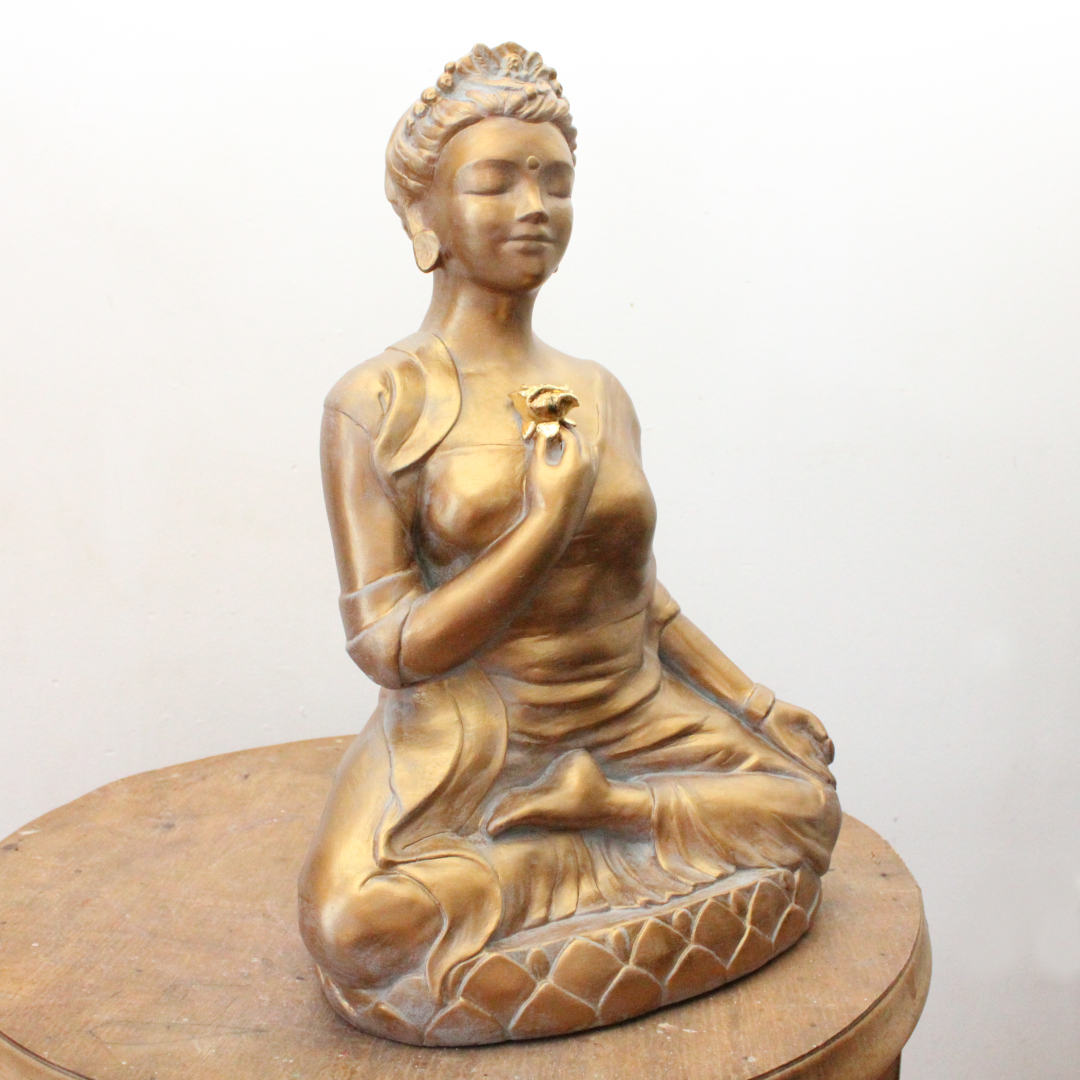History
of Buddha statuary
Buddha's image
Steffen Katz, Februar 2022
The image of a Buddha is familiar to all of us. But where do the typical characteristics of a Buddha statue come from? Who has determined these? Did Buddha really look like this?
German art historian Monika Zin provides information about this in an essay from 1998 (PDF). In the following, I will reproduce the essential points from her essay in my own words.
(Translated from German to English mostly with Deepl-translator)
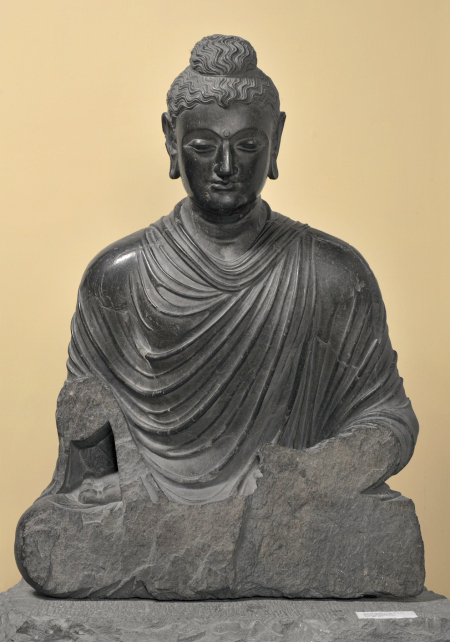
The beginnings: symbols instead of effigies
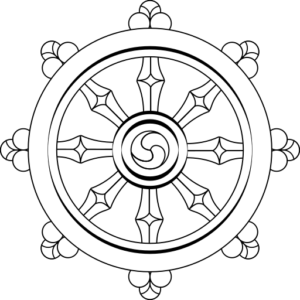
The first Buddha statues date from the 2nd century B.C., that is, from a time long after Gautama Buddha’s physical demise. So they cannot be a direct portrait. In the first centuries of the spread of the teaching, it was even avoided to depict the Buddha directly. Rather, he was represented in images only symbolically, via his footprints, or the proxy representation of a stupa or wheel. In later times this was justified in some Buddhist currents with the prohibition of a direct representation, as one finds it e.g. also in Islam, or in the 2nd commandment of the Bible: “Thou shalt not make unto thee any graven image”. However, other religions of the time did not use direct likenesses either. It is therefore more likely that the reduced symbolic representation was considered much more effective: A practical, simple graphic sign lends itself well to meditation! We also find this approach in the mandalas and yantras common in Tantrism. Such a sign offers a concrete object for meditation, at the same time it is so unobtrusive that it leaves a lot of space for one’s own mind – a good measure of emptiness, one could say.
The first Buddha statues
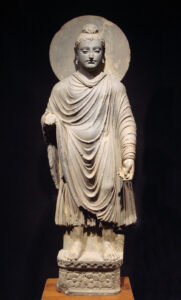
It becomes exciting in the middle of the 2nd century AD, when the first images of the Buddha appeared. Exciting also insofar as these were by no means stylistically fixed from the beginning, but developed dynamically and influenced each other.
Two regions of origin are decisive in this respect: Gandhara, on the territory of present-day Pakistan, and Mathura, south of Delhi. Indian art historians hold the view that the Buddha statues developed primarily from the model of Yaksha sculptures. Yakshas are Indian nature spirits and gods who were worshipped centuries earlier with larger-than-life statues. Consequently, the earliest statues from Mathura resemble the Yaksha style, with very large, robustly upright figures.
At the same time, Buddha statues were created further north in Gandhara, which, according to Western historians, mimic a Greco-Roman style. These are so different from the Yaksha style that it can be assumed that the two styles emerged independently. In the end, which region began the history of the Buddha statue first is idle – after some time, both inspired and enlivened each other. Thus, they gradually developed a classic pattern, which today we clearly recognize as a Buddha figure.
Features of a Buddha
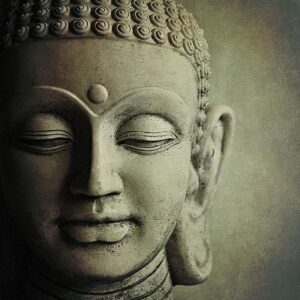
The basis for all representations are written down text passages about Vipasyin, the first of the Seven Buddhas of the past. In it, the external characteristics of a Buddha are described in detail on the basis of 32 characteristics. According to the teachings, Siddharta Gautama, the Buddha we think of today, is the seventh in the line of Buddhas. Therefore, the 32 characteristics do not directly describe the historical person of Siddharta Gautama Buddha. Rather, it was customary at that time to ascribe very special characteristics to an outstanding personality, such as a king, in order to substantiate his uniqueness: “Of golden shining skin … the legs resemble that of a gazelle … the chest that of a lion …”
As mentioned earlier, different regions and eras have interpreted and shaped the features differently. However, the following have emerged as particularly distinctive:
- Urna – a round mark between the eyebrows
- Ushnisha – a turban-like elevation on the head
- small dextrorotatory curls
- the long earlobes
- the lucky symbol of the wheel on the hands and soles of the feet
Still much discussed are the hand mudras of the Buddha figures. But more about that in another place.
Buddha statues – a living development
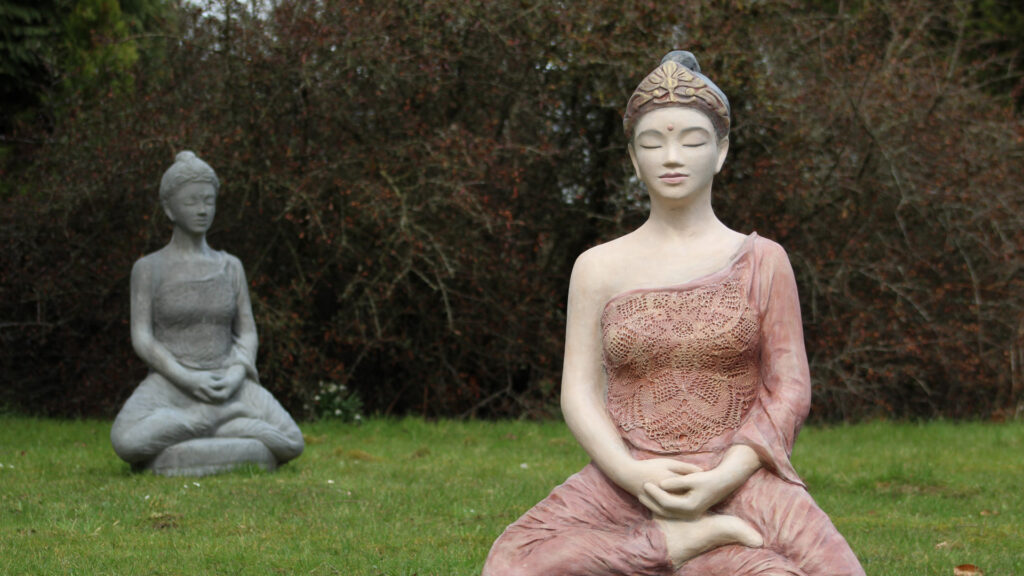
Monika Zins’ descriptions of the evolution of Buddha statues over the centuries have reinforced my belief that throughout the ages there have always been people who have interpreted and created their own representations of saints. A figure of a saint is man-made, but it reminds us of the divine.
With our sculptures and figures we would like to pass on our sensation of something that can hardly be described in words. Rather, we invite you to look yourself, to experience the form, color and materiality of our figures. To discover a fullness in them, and at the same time an emptiness that you fill yourself, with the spirit that is important to you.
May the sculpture on the outside help you to find your way inside.

